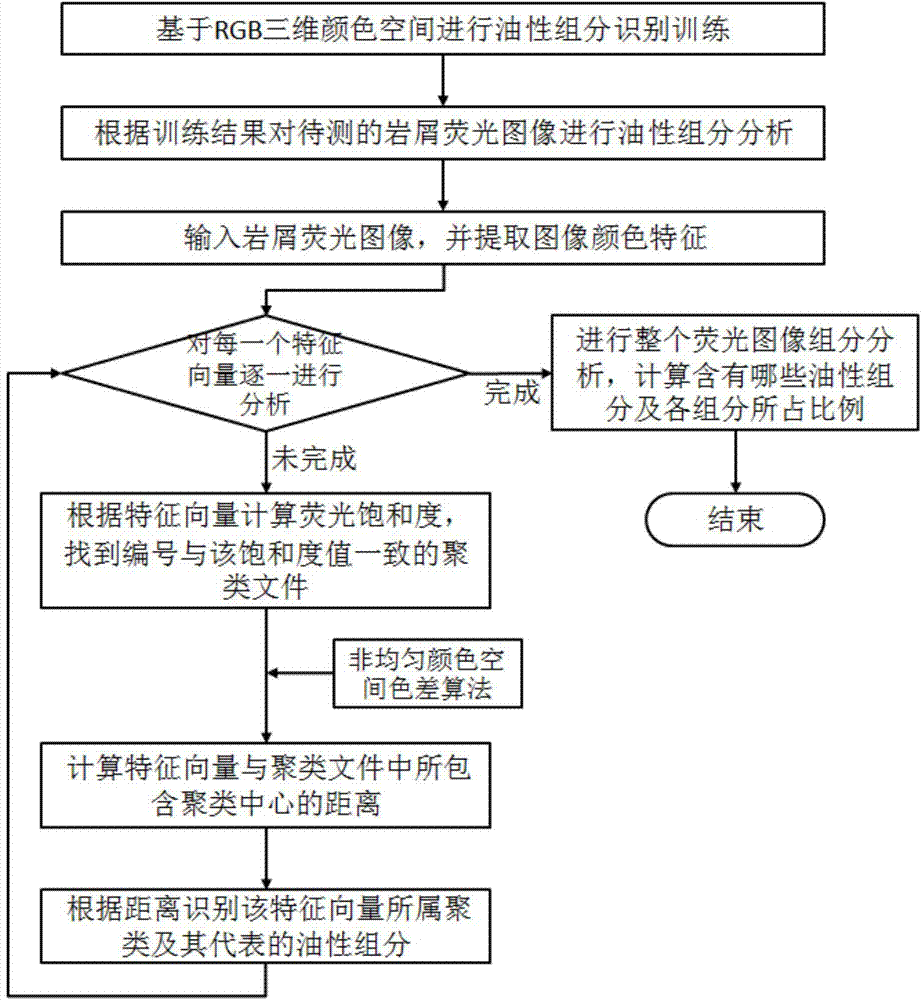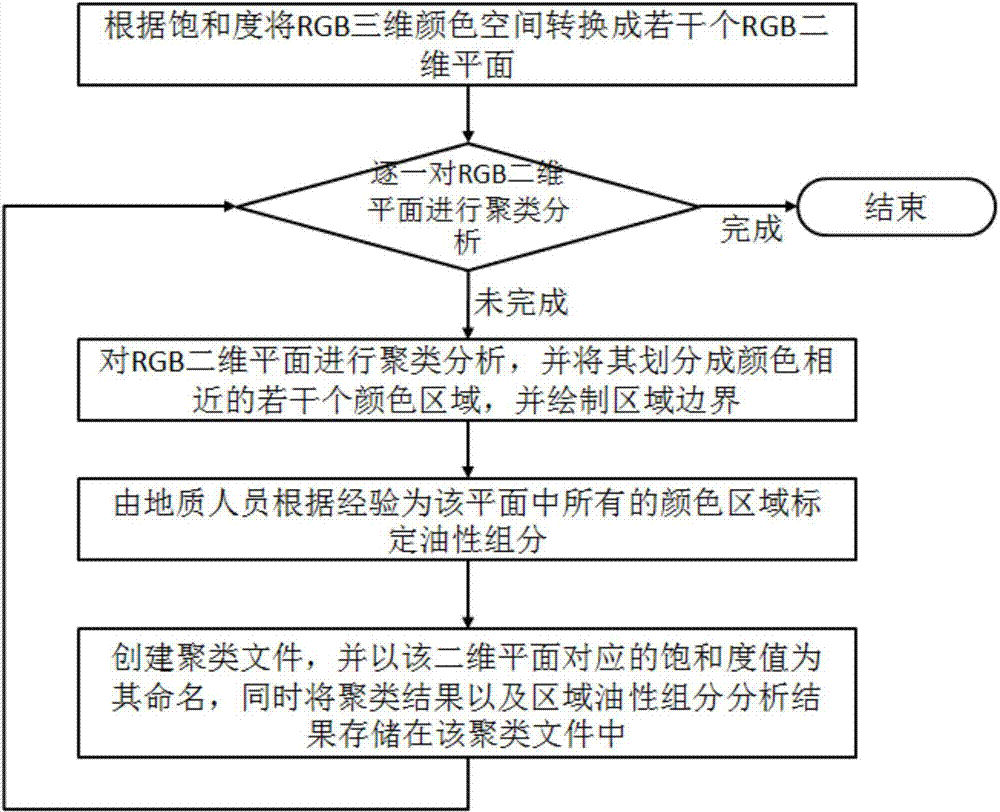Method for rapidly analyzing rock debris fluorescence image
A fluorescence image, fast analysis technology, applied in image analysis, image data processing, earthwork drilling, etc., can solve the problems of long calculation time of ISODATA, inconsistency between clustering results and perception, inability to guarantee the integrity of training samples, etc. The effect of computational complexity, increased accuracy, and reduced workload
- Summary
- Abstract
- Description
- Claims
- Application Information
AI Technical Summary
Problems solved by technology
Method used
Image
Examples
Embodiment Construction
[0022] The present invention will be described in detail below with reference to the drawings and embodiments.
[0023] Such as figure 1 As shown, the method for rapidly analyzing the fluorescence image of cuttings of the present invention includes the following steps:
[0024] 1. Such as figure 2 As shown, the oil component recognition training is performed based on the RGB three-dimensional color space. The RGB three-dimensional color space is a color space obtained by mixing three primary colors of red, green, and blue to generate different colors. The value range of red, green, and blue is usually an integer between 0 and 255. The red component is defined as the X axis, the green component is defined as the Y axis, and the blue component is defined as the Z axis, so that a three-dimensional space is obtained. Each possible color has a unique position in this three-dimensional space. In order to avoid missing possible colors during the recognition training process, this recog...
PUM
 Login to View More
Login to View More Abstract
Description
Claims
Application Information
 Login to View More
Login to View More - R&D
- Intellectual Property
- Life Sciences
- Materials
- Tech Scout
- Unparalleled Data Quality
- Higher Quality Content
- 60% Fewer Hallucinations
Browse by: Latest US Patents, China's latest patents, Technical Efficacy Thesaurus, Application Domain, Technology Topic, Popular Technical Reports.
© 2025 PatSnap. All rights reserved.Legal|Privacy policy|Modern Slavery Act Transparency Statement|Sitemap|About US| Contact US: help@patsnap.com



